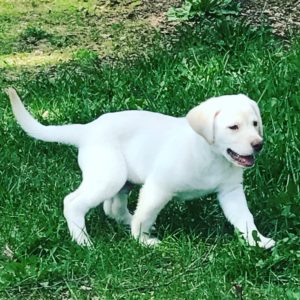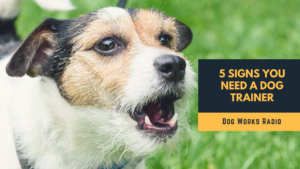The Villano de las Encartaciones is one of Spain’s most storied guardians, a dog whose presence carries the weight of centuries. Born from the needs of shepherds, landowners, and defense-minded communities in the Encartaciones region of the Basque Country, this breed embodies resilience, loyalty, and a time-honored commitment to protect. For families who value a calm, confident, watchdog temperament and an animal with a strong sense of place, the Villano de las Encartaciones offers more than companionship; it provides a living link to a rural culture where dogs and humans formed a resilient partnership.
A brief glance at its lineage reveals a dog shaped by necessity. Historically, these dogs patrolled vast coastal and inland areas, fending off unwanted intruders and alerting their human partners to potential threats. They were not mere pets; they were utilitarian partners in the work of farming, property protection, and herding, yet they carried themselves with a dignified calm that extended beyond their functional role. The Villano’s ancestry shares threads with other venerable Spanish working breeds, yet its distinctive temperament and appearance set it apart as a breed with a uniquely Basque identity.
Appearance and presence
The Villano de las Encartaciones is a large, powerful dog with a muscular frame that speaks to its athletic capability and endurance. Its coat is typically dense and weather-resistant, suited for the varied climate of the Basque region, where damp seasides meet rugged hills. In many lines, the coat can be medium to long, with a lush undercoat that helps regulate body temperature across seasons. The head is strong and expressive, with a keen gaze that communicates intelligence and awareness. Overall, the dog projects an aura of quiet authority, a creature that surveys its surroundings with confidence and purpose.
Height and weight can vary within the breed standard, but what remains consistent is the dog’s proportional balance: a sturdy chest, solid limbs, and a steady gait. The expression tends to be alert but not aggressive, a hallmark of a breed bred to be protective yet deeply affectionate with those it deems part of its pack. The color palette tends toward rich earth tones, faws of browns, brindles, and sometimes grayer hues, each coat telling a story of its own lineage and the landscapes that shaped it.
Temperament: guardian with heart and balance
One of the most compelling characteristics of the Villano de las Encartaciones is its dual persona: a vigilant guardian and a devoted companion. This is not a dog that thrives on constant chaos or hyperactivity; it flourishes in environments where structure, routine, and clear leadership are present. With appropriate socialization from an early age, the Villano forms strong bonds with family members and demonstrates remarkable patience with children, making it a reliable family guardian when raised in a nurturing setting.
The breed’s protective instincts are robust. In its role as a watchdog, the Villano assesses situations with a measured demeanor, opting for calm deterrence rather than impulsive action. That said, its loyalty is unshakable, and when a real threat appears, whether to its home, its people, or its territory, it responds with both courage and restraint. Properly exercised dogs in good health seldom resort to unnecessary displays of aggression; instead, they communicate through body language that is clear to those who know the breed.
Training and socialization: pathways to a well-rounded dog
Training a Villano de las Encartaciones is a process grounded in consistency, respect, and patience. The breed responds best to a confident, calm leader who can establish boundaries without resorting to harsh methods. Early socialization, exposure to people, different environments, sounds, and other animals, helps prevent wary behavior and builds a dog that can navigate a wide range of daily situations with ease.
Given their heritage as working dogs, Villanos often possess an independent streak. This can manifest as selective task interest or thoughtful problem-solving. The key is to channel that intelligence into constructive activities and training sessions that are short, frequent, and highly rewarding. Positive reinforcement, praise, tasty treats, play, that aligns with the dog’s motivation yields the best long-term results. Formal obedience training can be combined with practical tasks that simulate real-world duties, reinforcing the dog’s role as both guardian and family member.
Exercise, space, and daily life
Despite their protective nature, Villanos are not a breed of couch potatoes. They demand regular physical activity to maintain health, vitality, and a balanced temperament. A robust daily routine that includes long walks, varied terrain, and opportunities for mental stimulation is essential. The breed’s keen problem-solving abilities can be satisfied through puzzle toys and structured training games that engage the mind as well as the body.
In terms of living arrangements, Villanos typically thrive in homes that offer space and access to secure, supervised outdoor time. A house with a fenced yard is a practical setting, enabling safe exploration and guarding duties without constant supervision. However, like all large, intelligent breeds, they can adapt to apartment life if their exercise and mental stimulation needs are met through regular outings and purposeful activities. Prospective owners should be prepared to commit to a daily routine that respects the dog’s natural rhythms and protects its physical and emotional wellbeing.
Grooming and health: practical care for longevity
The Villano de las Encartaciones generally features a coat that requires regular but manageable grooming. Brushing several times a week helps reduce shedding in seasonal peaks and maintains a healthy skin environment. Attention to ears, teeth, and nails should be part of a routine care regimen, with periodic veterinary checkups to monitor for breed-specific concerns. While not prone to excessive barking, the breed’s protective instincts mean that early training helps curb unnecessary vocalization that could disturb neighbors.
Health considerations for this breed include typical large-dog concerns such as hip and elbow joint integrity, as well as the possibility of orthopedic or obesity-related issues if exercise is insufficient. A well-balanced diet tailored to age, weight, and activity level supports joint health and general vitality. Regular veterinary care, vaccinations, parasite prevention, and a careful eye for changes in appetite, energy, or mobility are essential elements of responsible ownership.
Living with a Villano: family compatibility and safeguarding
For families, the Villano de las Encartaciones offers a blend of steadfast loyalty and gentle family orientation. They tend to form a protective circle around their home and loved ones, alerting their households to potential disturbances while remaining gentle with children who treat them with respect. It is crucial, however, to educate all household members about boundaries and the dog’s needs. In households with toddlers or busy schedules, the breed’s independent streak can surface if it feels neglected or uncertain. Consistency, clear routines, and ongoing social experiences help maintain harmony.
Apartment dwellers or urban households must ensure sufficient access to outdoor spaces and opportunities to expend energy. A Villano left with unmet needs can become bored, leading to restlessness or behavior that challenges household peace. Conversely, a well-suited owner who values regular exercise, mental engagement, and attentive care will be rewarded with a dog that is a calm, authoritative, and loving presence in daily life.
Choosing a Villano: considerations for prospective owners
Bringing a Villano de las Encartaciones into your home is a decision that carries long-term responsibilities. Before adopting or purchasing, consider the following:
- Space and climate: A large, secure area for daily activity is important, especially in regions with damp or variable weather.
- Time and leadership: A Villano requires consistent guidance and daily interaction. A busy lifestyle with insufficient time for training can hinder the dog’s well-being.
- Socialization plan: Early and ongoing exposure to diverse stimuli, people, and environments reduces anxiety and fosters confident behavior.
- Long-term commitment: Lifespan and care for a large working breed require resources—financial, emotional, and time-related. Ensure you have a plan for ongoing veterinary care, training, and enrichment.
Cultural and regional significance: Basque heritage in the modern world
The Villano de las Encartaciones is more than a pet; it is a symbol of regional identity. Its presence in Basque communities evokes a sense of continuity with agricultural and rural life that has sustained the landscape and its people for generations. Today, these dogs are often celebrated in breed clubs, historical exhibitions, and regional dog events where enthusiasts share lineage, care practices, and stories that reinforce a living tradition. For those who value a breed with a deep cultural resonance, the Villano offers a rare opportunity to connect with Spanish dog heritage in a tangible, everyday way.
Breeding, ethics, and responsible ownership
As with any breed tied to traditional work roles, responsible breeding and ethical practices are central to the health of the Villano de las Encartaciones. Reputable breeders emphasize temperament, health clearances, and adherence to breed standards to reduce the risk of hereditary problems. Prospective owners should seek breeders who perform health testing, provide transparent lineage information, and prioritize the welfare of their dogs beyond market demand. Rescue and adoption options may also present opportunities to welcome a Villano into a loving home, though potential adopters should be prepared for the realities of rehoming a breed with strong guard instincts and a background that may include varied training histories.
A holistic approach to care: feeding, enrichment, and life stage considerations
Nutritional needs shift as a Villano ages, mirroring the needs of other large breeds. Puppies require careful, measured growth with appropriate calcium and energy intake to support bone development and muscle formation. Adult dogs benefit from a diet that maintains healthy weight and supports sustained activity, with attention to joint-supporting nutrients such as glucosamine and chondroitin as recommended by a veterinarian. Senior Villanos demand comfort-focused care, lighter exercise, and ongoing health monitoring.
Mental enrichment is a pillar of well-being for this breed. Interactive toys, scent work, strategic games, and training tasks that mirror real-life guarding duties help maintain cognitive function and prevent boredom. Consistent routines, predictable expectations, and positive reinforcement create a stable environment where the dog’s natural intelligence can flourish.
The future of the Villano de las Encartaciones in a changing world
As the relationship between dogs and humans evolves, the Villano de las Encartaciones stands as a reminder of how a breed can adapt while preserving its essential character. Modern households may emphasize companionship, travel-friendly arrangements, and flexible schedules, yet the Villano remains a watchdog and guardian with a powerful sense of loyalty. The breed’s future will likely depend on continued responsible breeding, community education about its needs, and opportunities for families to integrate this remarkable dog into a modern lifestyle without compromising its integrity or welfare.
In sum, the Villano de las Encartaciones embodies a distinctive blend of Basque regional pride, sturdy working heritage, and a temperament that harmonizes vigilance with affection. For the right owner, someone who appreciates size, dignity, and a keen sense of duty, the Villano offers a rewarding partnership built on mutual respect, steady leadership, and a daily reminder of the enduring bond between people and their canine guardians.
If you’re considering adding a Villano to your life, take the time to study the breed’s history, observe the dogs in person at trusted breeders or rescue groups, and speak with veterinarians and experienced owners who can share nuanced insights about care, training, and long-term companionship. A well-matched Villano de las Encartaciones can become not only a guardian of home and family but also a gentle ambassador of Basque tradition, integrity, and resilience, an enduring reminder that some partnerships, forged in soil, work, and loyalty, stand the test of time.










